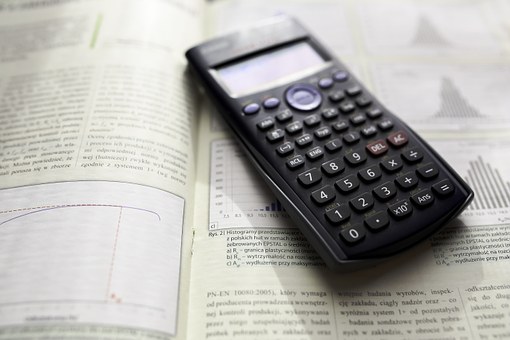
Studying for the GMAT can be overwhelming. There are numerous content areas to learn, question formats to familiarize yourself with, strategies to understand, formulas to memorize, etc., etc. There are also hundreds of different resources that you can use, all of which may give you conflicting advice about how and what to study. If you’re just starting to embark on your GMAT preparation journey, you may feel frustrated by the amount of information out there and unsure where to start.
In this guide, I’m going to boil GMAT preparation down to the 21 essential tips to help you study effectively. These strategies will take you from the very beginning of your GMAT preparation journey all the way through test day so that you know exactly how you should be spending your time.
Foundational Principles for GMAT Preparation
As you start to approach your GMAT test preparation, keep in mind these seven foundational principles. These foundational principles should form the core of your GMAT study strategy, as they focus on ensuring that you’re using the highest quality resources and crafting the study plan that works best for your individual needs as a test-taker.
#1: Set a Realistic Goal Score
The most important part of your GMAT test preparation is to make sure that your test prep works for you. In order to create a study plan that works for you, you need to first set a realistic goal score.
To set your GMAT goal score, you need to first learn the average GMAT scores of admitted applicants at the MBA programs you’re applying to. Record the average GMAT scores at each of the programs you’re applying to, then select the highest average score. You’ll want your goal score to be at or above the highest average score of your intended programs to make sure that you’re a competitive applicant.
Not sure how or what to study? Confused by how to improve your score in the shortest time possible? We've created the only Online GMAT Prep Program that identifies your strengths and weaknesses, customizes a study plan, coaches you through lessons and quizzes, and adapts your study plan as you improve.
We believe PrepScholar GMAT is the best GMAT prep program available, especially if you find it hard to organize your study schedule and don't want to spend a ton of money on the other companies' one-size-fits-all study plans.

You’ll also need to take an initial practice test to see where you’re scoring before you begin to prep. This baseline test will help you determine how many points you need to improve in order to meet that highest average score I just spoke about.
Note that making an improvement of more than 100 points is extremely difficult for most test-takers. If you find that your baseline score is over 100 points away from your target score, make sure you have a lot of time to study or consider changing your targeted MBA programs.
#2: Give Yourself Enough Time to Prepare for the Test
The amount of time you’ll have to prepare for the GMAT depends on a number of things, including how far away you are from your goal score and when your MBA applications are due. A solid GMAT study plan will take into account your time constraints in order to make sure you’ve got enough time to sufficiently prepare for the GMAT.
In general, the more time you have before the GMAT, the better. You’ll want to start studying for the GMAT at least three months before your test date, especially if you have a substantial number of points that you need to improve by to hit your target score.
As I mentioned above, the general rule of thumb is that it takes more hours to improve more points. Take a look at this estimation for how many hours you’ll need to study to improve a certain number of points:
- 0 – 50 point improvement: 50 hours
- 51 – 100 point improvement: 100 hours
- 100 – 150 point improvement: 150 hours
These hour recommendations are a general guideline for first-time test-takers who haven’t done much prep. It’s easier to make improvements when you’re just starting out, because you’re covering material that’s new to you, so you can quickly make a lot of gains simply by learning concepts like test-taking strategies.
Unfortunately, the more you’ve prepped, the more difficult it is to make improvements. If you’ve already studied for 50 hours, and are still looking to improve by over 100 points, you’ll need to put in more than 150 more hours or adjust your goals. It’s simply more difficult to improve by a lot of points the longer you’ve studied.
On the other hand, test-takers who are able to quickly grasp new concepts or who just need general brush-ups on a few content areas may need fewer hours to improve their scores. The length of time you need to prep depends a lot on your strengths and weaknesses as a student.
Make sure that you’re thinking about how many hours you’ll need to study when you start to make your plan. If you think you’ll need a lot of time to study, and you won’t have that enough time before your applications are due, you may want to consider pushing off your MBA applications to another year when you have more studying time.
#3: Choose a Test Date That Works for You
You’ll want to pick a test date that works for your schedule at the beginning of your GMAT test preparation. Selecting a GMAT test date early ensures that you’ll be able to take your test well before your MBA applications deadlines.
Depending on where you live, you may have limited options for when and where you can take the GMAT. The earlier you schedule your test, the more options you’ll have. You don’t want to end up in a situation where you’ve put in all the work to study for the GMAT and you can’t actually take the test before your applications are due.
When picking a test date, keep in mind your own personal schedule, as well as your strengths and weaknesses as a test-taker. If you’re an early riser, a morning exam time may ensure that you’re alert and at your best. On the other hand, if you need many strong cups of coffee and several hours to ease awake in the morning, an afternoon session may be better for you.
Don’t underestimate the importance of convenience. You’ll be stressed enough about taking the GMAT on test day — you don’t want to have overarching worries about getting your scores in on time or having to wake up too early hanging over your head as well.
#4: Create a Personalized GMAT Preparation Study Program
While the GMAT is a standardized test, you shouldn’t follow a one-size-fits-all study program when preparing for the test. The best GMAT study program is the one you create yourself, that takes into account all of your strengths and weaknesses as a student.
Creating your own personalized study program doesn’t mean you’ve got to make your own study program from scratch. Rather, use a sample study program (such as our three month study plan designed to raise your score 50 points), and customize it to your preferences and strengths.
Maybe you need to add more verbal time, because you really struggle with idioms. Or maybe, you only need to spend an hour on algebra, but you need extra help with geometry. Use a sample study plan to your advantage by adjusting the time spent on different tasks to match your own strengths and weaknesses as a test-taker.
#5: Create (and Stick to) a GMAT Test Preparation Study Schedule
Studying for the GMAT takes a lot of time. As you’re preparing for the GMAT, you’re probably balancing a lot of other different priorities: work, school, completing applications, spending time with family and friends. Having a concrete study schedule will help you keep track of what you need to do and when. You’ll have specific goals and times for each day so that you can keep yourself on track and organized.
Making and sticking to a study plan will also help you track your progress effectively. You’ll start by developing a baseline score, and then continue by working targeted drills that’ll build your skills in needed areas. Regularly completing practice tests and question sets will let you see how you’re improving from week to week and how likely you are to meet your goal score on test day.
Want to improve your GMAT score by 60 points?
We have the industry's leading GMAT prep program. Built by Harvard, MIT, Stanford, and Wharton alumni and GMAT 99th percentile scorers, the program learns your strengths and weaknesses and customizes a curriculum so you get the most effective prep possible.

#6: Use Official Practice Tests and Questions
I can’t overstate the importance of using official practice tests and questions during your GMAT prep. Real practice tests and questions are the best because they accurately represent the content, style, and format of questions you’ll see when you take the GMAT on your carefully selected test date. As such they’ll give you the best sense of what to expect on the exam and how you’re likely to score. While many test prep companies have high quality test questions, none can match the realism of actual retired GMAT test questions.
GMAC releases real, retired GMAT questions in the GMATPrep Software, as well as in their official guide to GMAT books. You can get up to six free, full-length GMAT practice tests if you purchase the official guide to GMAT. Those real retired practice tests are worth every penny of the official guide’s sticker price.
#7: Supplement With Targeted Study Resources
While GMAC has some solid real test prep resources out there (including GMATPrep Software and their official guide to GMAT), their resources aren’t the best for actually teaching the content on the exam.
The best way to prepare for the GMAT is to combine your use of real, retired GMAT questions with the content explanations and background found in resources like GMAT prep books (read all about the best GMAT books for your prep in our guide). You can find many targeted study resources that’ll teach you how to solve the different types of questions you’ll encounter on the GMAT.
If you’re concerned about cost, only purchase the targeted study resources you actually need. Focus on the two or three resources that’ll really make a difference in your weakest areas. For instance, if you really struggle with fractions or decimals, picking up a guide that focuses on those particular content areas will help you make substantial improvements in those areas.

Overall GMAT Preparation Tips
In the next three sections, I’ll be offering tips for how to prepare for the GMAT. First, I’ll start with tips that’ll help you prepare for the entire test. Next, I’ll talk about quant specific tips. Finally, I’ll offer tips specific to the GMAT verbal section.
#8: Take Regular Full-Length Practice Tests
One of the best ways to measure your progress towards your goal score is to take regular full-length practice tests as you approach test day.
As I mentioned earlier, you’ll want to start your prep by taking a full-length practice test to establish a baseline score. As you move through your study plan, you’ll want to take full-length practice tests at regular intervals to measure your progress and adjust your study aims. Measuring your progress helps you know if you’re on track to meet your goal so that you’re not surprised when you’re 75 points below your target on test day.
When taking practice tests, make sure to simulate test day conditions by taking the test in one sitting, on a computer, with no distractions. The more you’re able to simulate test day conditions while you practice, the more comfortable you’ll be when test day rolls around and the more stamina you’ll have to do your best throughout the entire three hour and 30 minute exam.
#9: Analyze Your Mistakes
Taking regular practice tests isn’t the only way to improve your GMAT score. In fact, if you take a full-length practice test every week, score it, and file it in a giant folder under your bed, you may as well not take the practice test in the first place. The value in practicing comes from gaining a better understanding of how you’re performing as a test-taker so you can attack your weaknesses with further prep.
When you take regular practice tests, you’re able to get a holistic picture of how you’re progressing towards meeting your goal score. You’re also able to adjust your study plan, by seeing what you’re doing well with and what’s still giving you trouble. You may find that your strengths and weaknesses as a test-taker shift as you study for the GMAT. Analyzing your practice tests helps you know when and how to adjust your study schedule.
In addition to analyzing your practice test mistakes, you’ll also want to analyze your mistakes on question sets you practice with. Similarly, analyzing mistakes on question sets will help you identify quick errors that you can easily fix, as well as larger trends about your strengths and weaknesses.
Use your analysis to make changes to your study schedule. If you had originally planned to spend 15 hours learning how to determine the area of a triangle, and then suddenly realize that you’ve mastered this key geometry component by analyzing your question sets, you’ll be able to adjust the amount of time you’ll spend so that you’re focusing more on the areas that give you trouble than on the areas that you’ve mastered.
Want to Identify YOUR GMAT Strengths and Weaknesses?
Our proprietary GMAT Diagnostic Assessment creates a customized study plan for you that takes you from registration all the way to test day! It is included with every account and proven to significantly maximize your score.
Get your personalized assessment as part of your 5 day risk-free trial now:

#10: Use Flashcards to Learn Key Content
Flashcards are a great tool to help you master content that you’ll see on the GMAT. They can help improve your fluency with key concepts, such as the formulas you’ll need to know to master the GMAT quant section. Every time you use a flashcard, you’re helping your brain learn to more quickly and accurately recall information.
Flashcards require active engagement. Rather than spending time trying to memorize an entire list of formulas, you’ll engage with each formula one by one. Working with flashcards forces you to ask yourself whether you really know a formula and can recall it quickly.
Flashcards are also a great tool for mastering the GMAT verbal section. You can use flashcards to help learn the meanings to different idioms, as well as to identify grammatical errors in sentences.
Flashcards are also easy to stow away in your bag and bring with you as you commute to work or wait in the doctor’s office. You can use flashcards anytime and anywhere, meaning they’re an extra valuable addition to your GMAT study schedule.

#11: Familiarize Yourself With the Style and Format of the Exam
The GMAT is very different than other standardized tests you may have taken (like the SAT and ACT). In particular, the quantitative and integrated reasoning sections have highly unique question types that may confuse test-takers when they initially encounter the questions.
Familiarizing yourself with the style and format of the exam will increase your comfort level and save you time as you take the GMAT. If you’ve spent a lot of time learning about the formatting of data sufficiency questions, for instance, you won’t get tripped up when you realize that all of them have the same five answers on test day.
Learning the formatting of the exam ahead of time will also save you time on test day. You won’t have to spend as much time reading the instructions that accompany each section of the test, because you’ll already have a good idea of what you’re supposed to do.
#12: Don’t Be Afraid to Get Help
Asking for help can be hard. If you’re planning to study for the GMAT mostly on your own (e.g., not taking a GMAT prep course or working with a tutor), having to ask for help if you’re simply not mastering a concept could feel like failing. However, asking for help is one of the best things that you can do to improve your GMAT score!
Sometimes, having a third party, like a personal tutor or a classroom teacher, explain a concept to us can make all the difference in whether or not we are able to master that concept. Whereas books often only explain a concept in one way, a good tutor likely knows at least two different ways to teach the same skill. Sometimes, hearing the same information presented in a different way can totally change our understanding of it.
If you’re worried about finances, getting help can seem like an unnecessary expense. After all, there are hundreds of free resources that you can use in your GMAT prep. However, working with a tutor doesn’t have to be extremely expensive. If you’ve been tracking your progress and analyzing your mistakes, you’ll have a good idea of where your strengths and weaknesses lie. Rather than hiring a tutor to take you through the entire exam, hire a tutor for two or three hours to help you through only the areas you’re struggling with. That way, you save money by limiting the number of hours you’re working with a tutor and you receive targeted help on the subjects that are giving you the most trouble.
GMAT Preparation Tips for the Quant Section
Many people fear the GMAT quant section. It’s got a reputation for being unfairly tricky and hard-to-master. However, the math on the quant section is actually pretty simple. And you can easily boost your quant score by following these four tips as you prepare for the GMAT.
#13: Master the Fundamentals
Like I mentioned, the GMAT quant section has an inaccurate reputation for testing obscure and difficult math concepts. In reality, the GMAT quant section only tests high school level math. You won’t need to have taken advanced math classes in college to conquer the quant section – rather, you’ll need to have complete mastery of those high school fundamentals.
Because the quant section only tests high school math concepts, you’ll likely have encountered every concept before you begin studying for the GMAT. That means that your focus in preparing for the GMAT lies in mastering math you already know, rather than learning new types of math.
The trick to the GMAT quant section is that it presents these high school math concepts in a more difficult way. Instead of testing each skill separately, you’ll often need to use two or more skills to solve a question (such as inequalities and percents or area of a triangle and probability). Master your high school math fundamentals so that you’ll be able to recognize which specific skills you need to solve a question and then quickly and correctly employ them.
The GMAT also doesn’t give you any formulas or allow you to bring a formula cheat sheet into the exam. Mastering the fundamentals, then, also means memorizing the formulas you’ll need (such as area of a circle) to perform different skills. Flashcards are a great tool to help you with memorization.
#14: Practice Without a Calculator
The GMAT doesn’t allow you to use a calculator on the quant section. While banning calculators may seem unnecessarily unfair, it’s actually a good thing. It means that the math you’ll need to solve isn’t complicated enough to require a calculator.
However, working without a calculator can be challenging, especially if you’re used to using one to solve all kinds of math problem. The best way to prepare for not using a calculator on the GMAT is to not use a calculator during your GMAT prep. By practicing without a calculator, you’ll get used to solving equations by hand and learn how to both check your work and increase your speed.

#15: Master the Data Sufficiency Style
The data sufficiency questions on the GMAT are undeniably weird. For one thing, all data sufficiency questions have the same five answers. Data sufficiency questions are often seen as the most difficult part of the GMAT and leave many prospective test-takers worried about encountering them on test day.
Data sufficiency questions, however, only test high school math skills, just like the rest of the GMAT quant questions. So you won’t need to know any advanced mathematics to answer them, even if the formatting is tricky. Practicing data sufficiency questions often will get you used to their weird style.
GMAT Preparation Tips for the Verbal Section
While the GMAT verbal section isn’t quite as notorious as the quant section, it’s still difficult and intimidating to many test-takers. These three tips will help you as you’re sifting through the information in each GMAT verbal question.
#16: Ask Yourself Questions
The passages on the GMAT aren’t designed to be particularly interesting. However, by continuously asking yourself questions, you can engage with the passage and make sure you’re focusing on important ideas. Ask yourself the following questions as you’re reading to boost your engagement.
- What’s the main focus of the passage, or what’s the passage mostly about?
- What’s the purpose of this passage? Why did the author write this passage?
- How is the passage organized? What happens in the introduction, body, and conclusion of the passage?
- What evidence is used to support the main idea or argument in this passage? How is the author proving his or her point?
#17: Don’t Draw on Outside Knowledge
Don’t bother studying obscure facts about stock market prices or the history of business trade policies before you get to the GMAT. The GMAT tests your ability to synthesize information that you’re seeing for the first time.
Everything you’ll need to know to answer the questions will be found directly or inferred from the passage. If the passage’s topic seems confusing or obscure, don’t worry! That’s the point. You’re not required to know anything special, and you’ll find all the information you need to learn in the passage itself.
#18: Pick a Reading Strategy and Stick to It
Reading on the GMAT is extremely different from reading in your daily life. GMAC purposefully makes the texts on the GMAT verbal test are dense, boring, and hard to read. You can easily get bogged down focusing on insignificant details as you read GMAT passages.
Having a reading strategy will help you target your reading to find the most important information from the passage. You’ll also be able to better budget your time because you’ll have a specific way you’re approaching each text and question set. Having a reading strategy ensures that you’ll be able to immediately be able to dive in and dissect a passage, without wasting time trying to figure out your approach.
There are few different approaches to reading for the GMAT. Some ask you to read the passage in full first before turning to the GMAT verbal questions. Some ask you to read the questions first before searching for information in the passage. Some ask you to skim the passage first, then look at the questions, then go back to the passage. Each of these strategies has its own pros and cons. During your practice, try out each of these strategies. Find the one that feels the best to you and yields the best results, and then stick to that. That way, you’ll get faster and better at it as you keep working.
Tips on Preparing for GMAT Test Day
Doing well on the GMAT isn’t about learning some fast and easy tips and tricks that’ll help you on test day, like “always guess letter ‘C’” or “eliminate any answer choice that is too long”! Instead doing well on the GMAT is about employing the tips I’ve discussed throughout this article during your GMAT preparation and on test day as well.
There are a few tips I can offer about test day, but they’re mainly about making sure that you’re comfortable and have everything you need to get to your exam on time. Other than these three tips, on test day, you should focus on employing the same strategies you’ve been using all along in your GMAT prep.
#19: Make Sure You Have Your ID
You must bring a valid, GMAT approved photo ID to be admitted your exam. If you forget to bring a photo ID, or if it doesn’t fit the qualifications set out by GMAC, you won’t be allowed to take the GMAT.
If your photo ID doesn’t meet the qualifications, you won’t be admitted to take the GMAT! If your photo ID has all of the qualifications but is expired, you won’t be admitted to take the GMAT. Make sure your ID fulfills all the requirements well before test day, because it can often take awhile to replace a driver’s license or passport. For more information on what makes a valid ID, you can check out our article on what to bring to the GMAT.

#20: Know Where the Test Center Is
Having printed directions to the test center or the address already pre-loaded onto your phone will save you time and stress as you’re driving to your appointment. Having printed directions can help if your phone unexpectedly dies or fails, while having the address pre-loaded onto your phone can help you search for alternate routes in case of traffic.
If you can, drive the route to your test center before test day (or take the buses or trains you’ll need to take). Running through the route once can point out any potential challenges, like a fast connection between train cars or a tricky turn that you may miss while driving. If you know the route ahead of time, you’ll have less of a chance of getting lost or skipping a key part of the trip that’ll cause you to miss your appointment.
#21: Know Where You Want to Send Your Scores
As part of your GMAT test day appointment, you’ll be able to select up to five programs to send your GMAT scores to. Your GMAT exam fee includes the cost of sending your scores to these five schools. You’ll only be able to send your free scores once, immediately before your exam. If you don’t select any schools to send your scores to, you can do it later, but it’ll cost $28 per school.
It’s a good idea to bring a list of the MBA programs you want to send your scores to so that you aren’t flustered with trying to make a decision on test day and so that you don’t spend unnecessary money sending your scores at a later date.
Review: What You Need to Know for GMAT Preparation
In this guide, I’ve walked you through a bunch of tips that’ll help you as you’re preparing for the GMAT and when you take the test on test day. Keep in mind the following themes as you’re approaching your GMAT prep.
Every test taker is able to do well on the GMAT if they set realistic goals, are aware of their strengths and weaknesses, and practice strategically and well. Doing well on the GMAT is first and foremost about understanding what doing well means to you and then building and sticking to a plan that will help you achieve your goals.
As you’re getting ready to take the GMAT, make sure you’re also being kind to yourself. Studying for the GMAT and applying to MBA programs can be incredibly stressful. You’ll do better on the test if you’re relaxed and confident, rather than stressed out and worried. Following the tips I’ve outlined can help you feel more ready for the big test day.
What’s Next?
Setting a realistic goal score is a hugely important part of your GMAT prep. By setting a realistic goal score, you give yourself a target to work towards and a benchmark by which to measure your progress as you prep for the GMAT. Setting a goal score isn’t as simple as simply picking a goal number. In our guide to what makes a good GMAT score, you’ll learn about how to set a goal that makes sense for your abilities and needs as a test-taker.
As I mentioned in the article, creating a personalized GMAT study plan is an important part of making sure that you’re prepared for the GMAT. Having a personalized GMAT study plan means that you’ll be able to spend time on the areas that you’re the weakest in, while limiting the study hours you spend on topics you’ve mastered. In our guide to crafting a GMAT study plan, you’ll get four sample GMAT study plans that you can customize to your needs.
Looking for more tips about how to master the GMAT quant or verbal sections? Our in-depth guides will give you all the information you need to know to boost your GMAT total score, including how to study for each section, what types of content you’ll encounter, and what strategies will help you maximize your score. Read our guides to the GMAT quant section and the GMAT verbal section to get started.
 PrepScholar GMAT
PrepScholar GMAT
